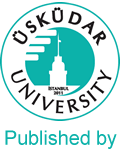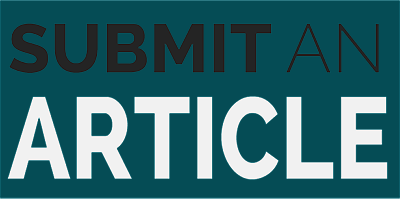Years
2016
2015
Categories
Authors
ARTICLES
Case Report
Turkish Title : İşitsel Varsanıların Tedavisinde Transkaranial Manyetik Uyarım Kullanımı: Bir Olgu Sunumu ve Kısa Gözden Geçirme
Gökben Hızlı Sayar,Hüseyin Bulut,Nevzat Tarhan
JNBS, 2016, 3(1), p:32-36
In this case we report the efficacy of repetitive transcranial magnetic stimulation for treatment resistant auditory verbal hallucinations. The majority of protocols have utilized low-frequency suppressive repetitive transcranial magnetic stimulation over the left temporoparietal cortex with some therapeutic benefits in ameliorating auditory hallucinations. Normalizing the functional connectivity between the temporoparietal and frontal brain regions may underlie the therapeutic effect of repetitive transcranial magnetic stimulation on auditory hallucinations in schizophrenia. Regarding side effects, the rTMS intervention was well tolerated in this case. Future research must focus on the optimum stimulation site and parameters.
Bu olgu sunumunda tekrarlayan transkranial manyetik uyarımın tedaviye dirençli işitsel varsanılarda etkinliği bildirilmektedir. Literatürde işitme varsanılarında tedavisel etkinliği oldığu bildirilen protokollerin çoğunda sol temporoparietal bölgeye baskılayıcı düşük frekanslı transkraniyal manyetik uyarım kullanılmıştır. Temporoparietal ve frontal beyin bölgeleri arasındaki işlevsel bağlantının düzeltilmesi, şizofrenide işitsel varsanılarda transkranial manyetik uyarımın etkinliğinin altında yatan mekanizma olabilir. transkranial manyetik uyarım bu olguda bildirilen hasta tarafından iyi tolere edilmiştir. Gelecekteki çalışmalar optimum uyarım bölgesi ve parametreleri üzerine yoğunlaşmalıdır.
Review Article
N-Acetylcysteine in treatment of Trichotillomania
Turkish Title : Trikotilomanide N-Asetilsistein kullanımı
Hüseyin Bulut,Gökben Hızlı Sayar
JNBS, 2015, 2(3), p:110-113
Trichotillomania is a chronic mental disorder characterized by recurrent hair-pulling. Hoarding, excoriation and trichotillomania are classified as obsessive-compulsive related disorders in DSM-5, which share similar clinical presentations, characterized by inappropriate and excessive repetitive behaviors and dysregulation of inhibitory control processes. Research evidence suggests that abnormalities in the cortico-striato-thalamic-cortical circuits are one of the key factors underlying the pathophysiology of obsessivecompulsive related disorders, including trichotillomania. Glutamate is the primary neurotransmitter within the cortico-striato-thalamiccortical circuits. Therefore, the use of glutamate-modulating agents is subject to interest for obsessive-compulsive related disorders. N-acetylcysteine, a derivate of the amino acid L-cysteine, has been explored as potential therapy for obsessive-compulsive related disorders, including trichotillomania. Pharmacotherapies that target the prefrontal glutamatergic system, such as N-acetylcysteine, may correct the underlying pathophysiologic abnormalities and symptoms of trichotillomania. Even a limited number of studies are suggesting that N-acetylcysteine is a promising treatment option, these studies did not assess treatment effects exceeding 3-4 months treatment period. Longer term effects of N-acetylcysteine therapy in trichotillomania require further evaluation.
Trikotilomani tekrarlayan saç çekme ile karakterize kronik bir ruhsal bozukluktur. DSM-5’te istifleme, ekskoriasyon ve trikotilomani, uygunsuz ve aşırı tekrarlayıcı davranışlar ve inhibitör kontrol süreçlerinin bozulması ile karakterize benzer klinik sunumlar paylaşan bozukluklar olarak “obsesif-kompulsif ilişkili bozukluklar” olarak sınıflandırılır. Araştırma bulgularına göre kortiko-striato-talamik-kortikal devrelerde anormallikler, trikotilomaninin de dahil olduğu obsesif kompulsif ilişkili bozuklukların patofizyolojisinde yer alan en önemli faktörlerden birisidir. Glutamat kortiko-striato-talamik-kortikal devrelerde birincil nöroiletkendir. Bu nedenle, glutamat modüle edici ajanların kullanımı, obsesif kompulsif ilişkili bozukluklar için ilgi çekicidir. N-asetilsistein, amino asit olan L-sisteinin bir türevidir ve trikotilomani de dahil olmak üzere, obsesif kompulsif ilişkili bozukluklarda potansiyel tedavi olarak incelenmiştir. N-asetilsistein gibi prefrontal glutamaterjik sistemi hedefleyen farmakoterapiler, trikotilomani belirtileri ve altta yatan patofizyolojik bozukluklarda etkili olabilir. Sınırlı sayıda çalışmada N-asetilsistein umut verici bir tedavi seçeneği olarak izlenmiş olsa da bu çalışmalar 3-4 ay tedavi süresini aşan etkinliği değerlendirmemiştir. Trikotilomaninin N-asetilsistein ile tedavisinin uzun dönemli etkileri incelenmelidir.
| ISSN (Print) | 2149-1909 |
| ISSN (Online) | 2148-4325 |
2020 Ağustos ayından itibaren yalnızca İngilizce yayın kabul edilmektedir.


